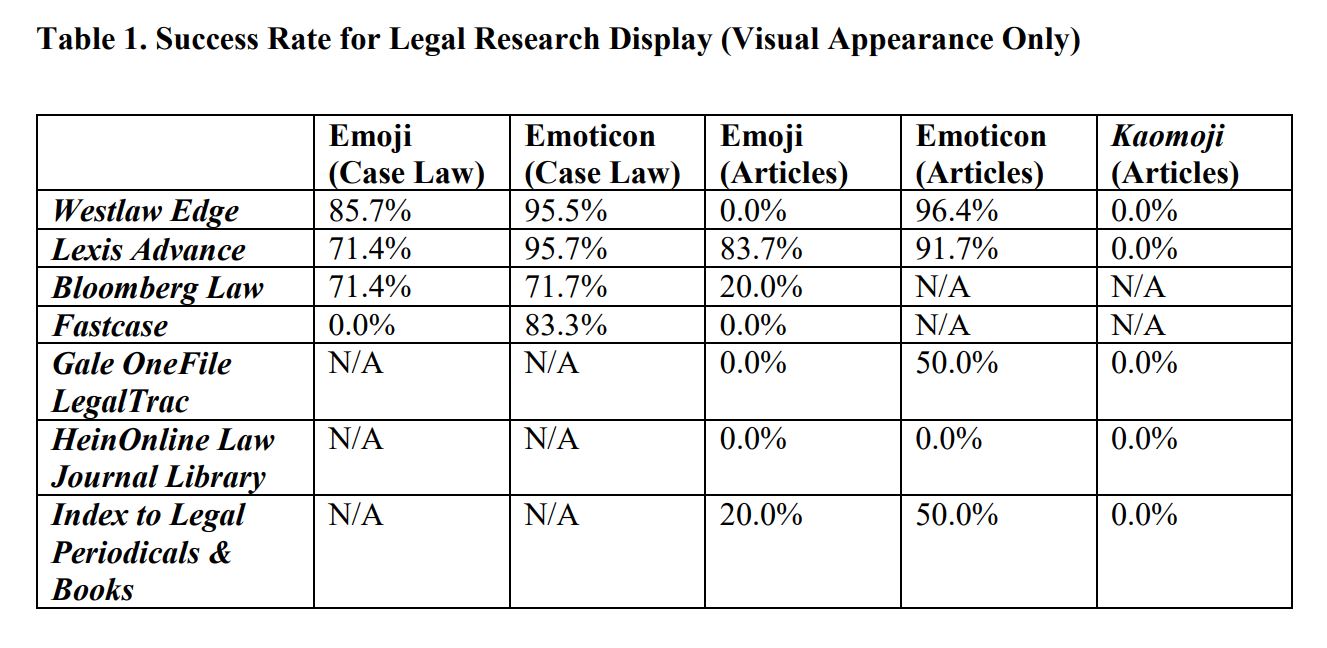Legal Research Services Are Struggling With Emojis and Emoticons
Jennifer L. Behrens, a law librarian at Duke Law School, has posted an article: “Unknown Symbols”: Online Legal Research in the Age of Emoji.” She conducted numerous search queries to see how the major legal research services handled case opinions and law review articles that included emojis, emoticons, and kaomojis. The dataset is somewhat small–7 law review articles and 19 opinions–so the stats are a little lumpy. This chart conveys the gist:
 As you can see, none of the services know what to do with kaomojis, and in general the services handle emoticons better than emojis (but even that isn’t perfect). The article provides numerous details of rendering anomalies, such as Lexis mistakenly rendering the letter P (in the emoticon “:P” for tongue sticking out) as a paragraph symbol.
As you can see, none of the services know what to do with kaomojis, and in general the services handle emoticons better than emojis (but even that isn’t perfect). The article provides numerous details of rendering anomalies, such as Lexis mistakenly rendering the letter P (in the emoticon “:P” for tongue sticking out) as a paragraph symbol.
Some implications of her findings:
- It’s probably still too early to have emojis, and perhaps even emoticons, in article titles. Electronic databases aren’t guaranteed to handle those titles properly, hindering findability and possibly searchability.
- As I’ve suggested before, all electronic databases should offer searchers the ability to conduct “keyword” searches by emoji and emoticon. Of course, that still won’t help if the services aren’t properly indexing the emojis/emoticons in their database corpus.
- If in doubt, don’t rely on an electronic database’s version of an article or legal opinion as the canonical source for emojis or emoticons. Instead, go back to the original PDF or print version to see what the author and publisher actually said. As the article concludes: “When can researchers or authors expect to feel confident that online research systems will properly display emoji, emoticons, and kaomoji as an embedded part of the full text? To borrow phrasing from one early article, on the topic of evidentiary standards for such icons, ‘For now, the answer appears to be ¯\_(ツ)_/¯.'”

Pingback: News of the Week; October 16, 2019 – Communications Law at Allard Hall()